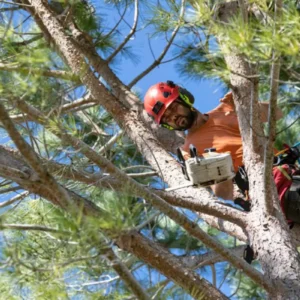In the world of storytelling, pacing is like the heartbeat of a narrative. It sets the rhythm, dictates the flow, and keeps the audience engaged from beginning to end.
Whether you’re crafting a novel, screenplay, or even a marketing campaign, mastering the art of pacing is essential for captivating your audience and delivering a memorable experience.
Contents
The Power of Pacing
Writing pacing refers to the speed and rhythm at which a story unfolds. It encompasses everything from the tempo of dialogue to the timing of plot reveals. Just like a well-composed piece of music, effective pacing can evoke emotions, build suspense, and guide the audience through a rollercoaster of highs and lows.
Why Pacing Matters
- Engagement – By controlling the pacing, storytellers can maintain the audience’s attention and prevent boredom or confusion.
- Emotional Impact – The speed at which events unfold can intensify emotions, whether it’s excitement during a fast-paced action sequence or anticipation during a slow-burning reveal.
- Narrative Structure – Pacing influences the overall structure of a story, helping to establish tension, climax, and resolution.
Elements of Pacing
To understand pacing better, let’s break it down into its key elements:
Dialogue
Dialogue serves as the heartbeat of many narratives. The cadence of speech, the pauses between words, and the back-and-forth exchanges all contribute to the pacing of a scene.
Action
Action sequences are like adrenaline shots injected into a story. The pace quickens as characters face obstacles, engage in battles, or embark on daring pursuits.
Description
The level of detail in descriptions can influence the pacing of a story. Concise, vivid descriptions can propel the narrative forward, while lengthy passages may slow it down.
Scene Length
The length of scenes plays a crucial role in pacing. Short, snappy scenes can create a sense of urgency, while longer scenes allow for deeper exploration and character development.
Narrative Devices
Techniques such as flashbacks, montages, and cliffhangers can manipulate the pacing, keeping the audience on the edge of their seats or providing moments of reflection.
Mastering Pacing Techniques
Now that we understand the importance of pacing, let’s explore some techniques for mastering this fundamental aspect of storytelling:
1. Tempo Shifts
Just like a piece of music, varying the tempo of your narrative can create dynamic shifts in pacing. Speed up during action-packed scenes and slow down for moments of introspection or revelation.
2. Tension Building
Gradually increasing tension throughout the story can keep readers or viewers hooked. Introduce obstacles, raise the stakes, and delay resolution to build suspense and anticipation.
3. Show, Don’t Tell
Instead of dumping exposition or backstory all at once, sprinkle it throughout the narrative. This not only maintains pacing but also keeps the audience engaged by allowing them to piece together information on their own.
4. Cliffhangers
Ending chapters or scenes with a cliffhanger is a tried-and-true technique for keeping the audience invested. Leave them wanting more, and they’ll eagerly turn the page or hit play on the next episode.
5. Rhythm and Flow
Pay attention to the overall rhythm and flow of your story. Just like a symphony, it should have moments of crescendo and decrescendo, leading the audience on an emotional journey.
Common Pitfalls to Avoid
While pacing can elevate a story, there are also pitfalls to watch out for:
1. Rushing or Dragging
Avoid rushing through important plot points or dragging out scenes unnecessarily. Find the right balance to maintain a steady pace throughout.
2. Lack of Variety
Monotonous pacing can lead to boredom. Mix up the tempo, vary scene lengths, and incorporate different narrative devices to keep things interesting.
3. Over-explanation
Trust your audience to fill in the blanks. Over-explaining can bog down the pacing and rob readers or viewers of the opportunity to engage their imaginations.
4. Ignoring Feedback
Pay attention to feedback from beta readers, editors, or test audiences. If they flag pacing issues, don’t dismiss them. Instead, use their input to refine and improve your storytelling.
Conclusion
Mastering the art of pacing is essential for any storyteller looking to captivate an audience. By understanding the nuances of tempo, tension, and flow, you can craft narratives that resonate deeply and leave a lasting impression. So, next time you sit down to write or create, remember the power of pacing and let it guide you on your storytelling journey.
FAQ: Answering Your Burning Questions
Q: How can I determine the appropriate pacing for my story?
A: Finding the right pacing involves balancing the needs of your plot, characters, and audience. Experiment with different rhythms, gather feedback, and trust your instincts as a storyteller.
Q: What should I do if I realize my pacing is off?
A: Don’t panic! Pacing issues are common and fixable. Take a step back, analyze your story structure, and consider where adjustments can be made. Sometimes, simply rearranging scenes or tightening dialogue can make all the difference.
Q: Can pacing vary depending on the genre of my story?
A: Absolutely! Different genres have different expectations when it comes to pacing. For example, thrillers often have fast-paced, pulse-pounding narratives, while literary fiction may favor a slower, more contemplative pace. Tailor your pacing to fit the genre and tone of your story.





